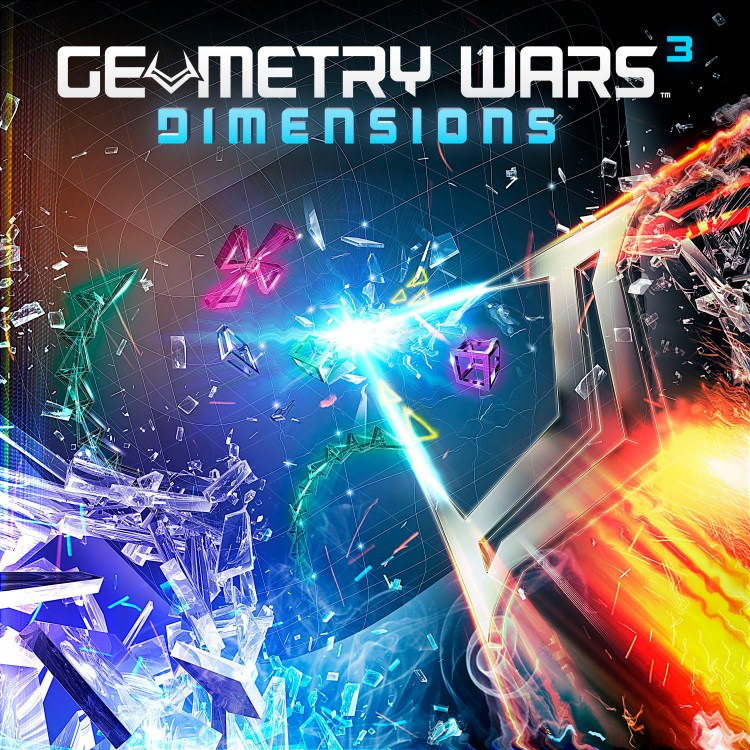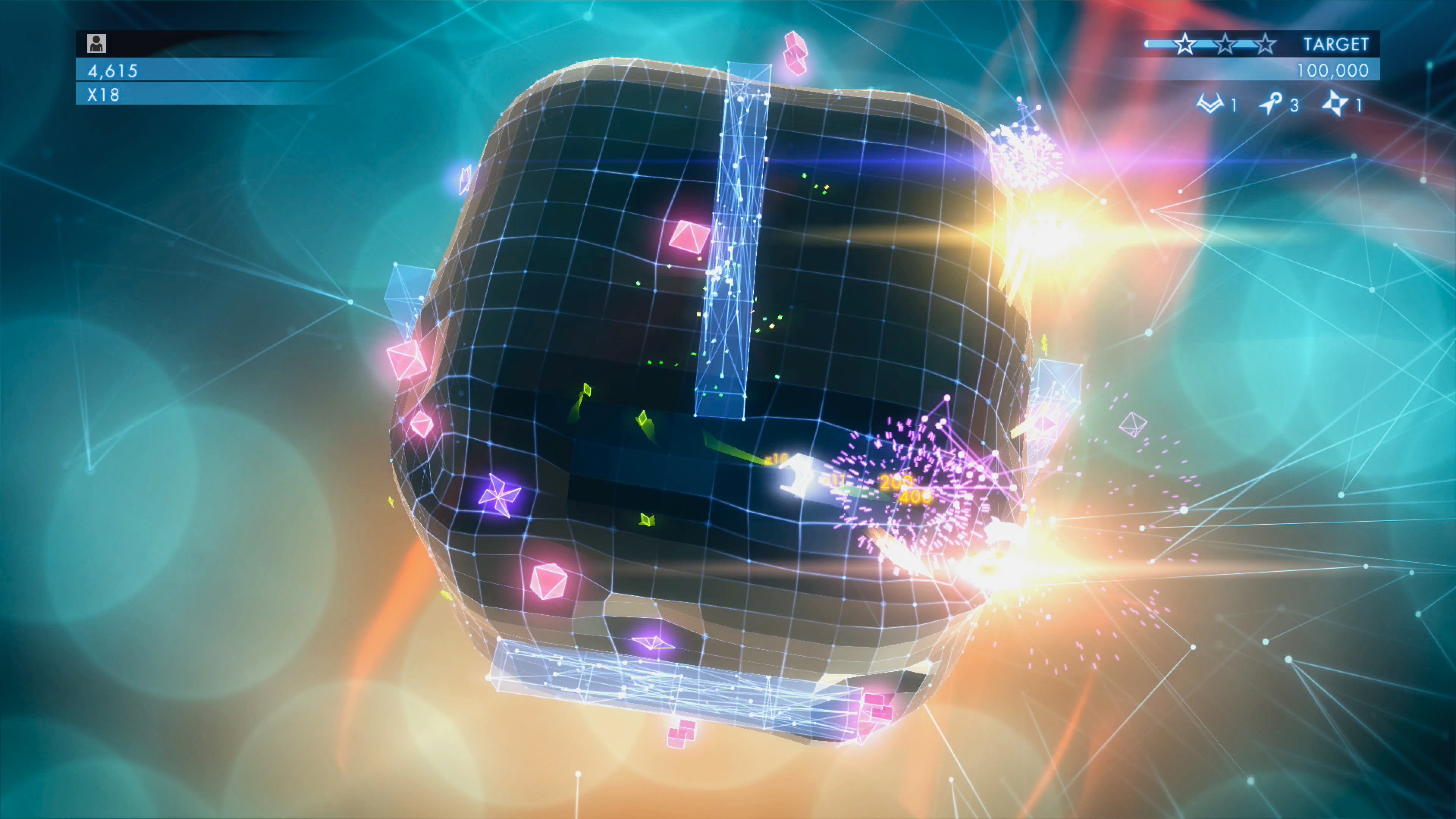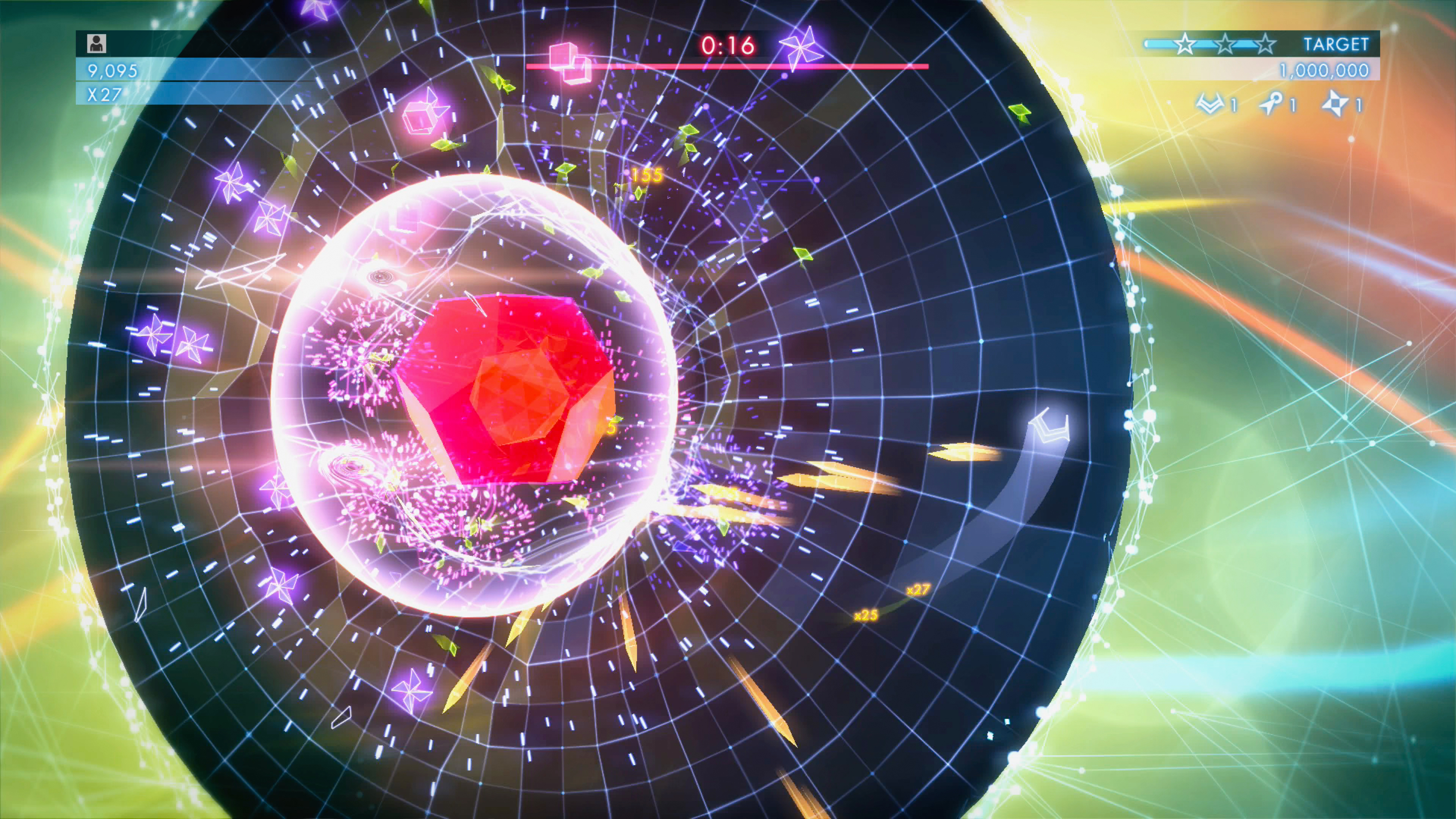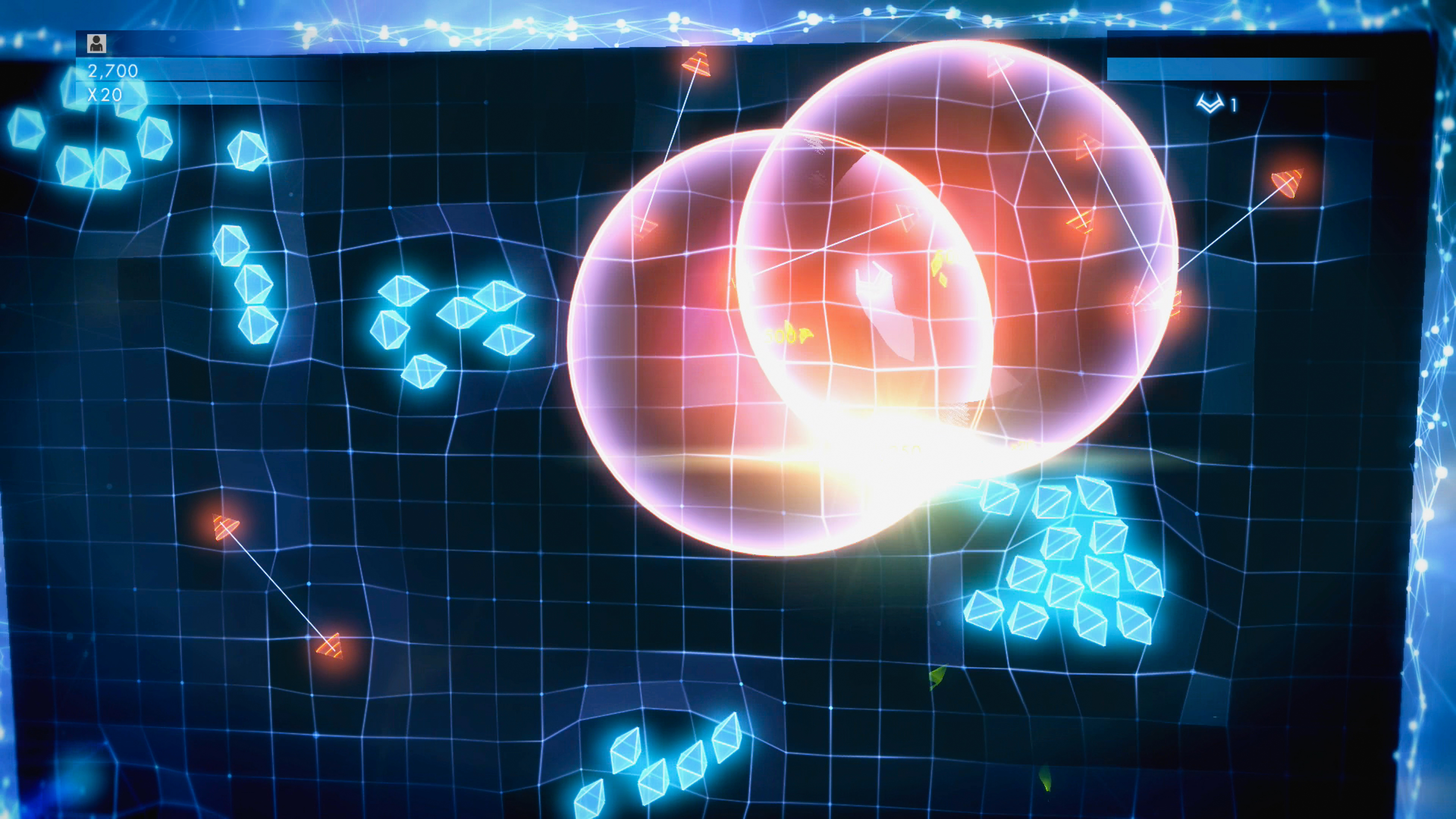Corners are your new worst enemy in Geometry Wars 3: Dimensions.
For the third installment in the Geometry Wars franchise, Lucid Games blew out, curved, bent, and otherwise expanded formerly flat stages into dozens of new shapes. The new corners and horizons make for dangerous blind spots that add an extra layer of challenge this time around. After around an hour with early code for Geometry Wars 3: Dimensions Xbox One, I spoke briefly with Lucid Games cofounder Craig Howard about much about Geometry Wars has changed after adding the extra axis.
A new challenge at the edges
“Changing the grid shapes allow us to experience different aspects of how to combat the enemies,” Howard said, “We were keen to ensure these shapes did not have to be confined to 2D as there are a lot of things that we wanted to try from a design perspective, giving us a richer range of gameplay sensations for the player. “
These sensations largely focus on newfound sense of the unknown. Previous Geometry Wars laid out the entire gameplay field at the start. As long as you kept your eyes on where enemies initially spawned from, you always had a line-of-sight awareness of the distance between your ship and death.
Now that you can pilot along the curves of a peanut-shaped grid, that advantage is largely gone. Enemies can appear at random from over the horizon at any moment, forcing you to be on alert than you had been in past games. But, as Howard describes, advanced players can turn these new corner transitions into an asset.
“The player is able to see enemy spawns all over the map thanks to some of the great new graphical effects,” said Howard. “The edges of the grid also deform so you can see enemies are about to approach the crest of the current shape. Also importantly, the ship has always had an analogue range of movement, so the high scoring players learn to use that to briefly creep around some of the more severe shape edges if they need to take stock of the evolving chaos.”
But Dimensions’ stages aren’t going completely insane, yet. Any basic shape you can think of has a level or two devoted to it. But that doesn’t mean there will be any boss battles on a re-creation of Mount Rushmore, at least not until someone finds a way to balance the gameplay and find out how to maneuver around Thomas Jefferson’s chin.
“We can do pretty much most shapes, although we want ones that are flowing for the player,” Howard said, “In the future we may explore more complex shapes for special modes if we have demand from the players, and ones that can promote interesting game modes.”
Adding another dimension
Two decades ago, most of the industry learned the hard lesson of adding a third dimension. For every success like Super Mario 64, dozen IP that didn’t survive the evolution. For what I have played so far of Dimensions, the new perspective preserves – it not improves – feel of Geometry Wars. The key to this apparent success for Lucid Games was to prototype both a 2D and 3D stage with the same enemy patterns, and go from there.
“One of the important things for us was to ensure we kept the movement and pace of the player ship and enemies exactly the same as the previous games,” said Howard. “To achieve this we would prototype a 3D level and a 2D level running the same enemy patterns etc. This allowed us to see if we could get similar scores. The guys and girls here looked at tweaks to the visuals such as the spawn patterns and the camera. All of these helped feed the players peripheral vision on enemies approaching, providing the player with an almost innate sense of danger to help combat the attacking enemies over the 3D shapes.”
The walls are closing in
But Lucid Games didn’t stop at adding 3D. The added freedom of three-dimensional space meant that some stages would need an added nemesis if Dimensions was to retain the level of challenge Geometry Wars series has enjoyed since its first installment. Enter the barriers: walls and blocks that can move, remain fixed, or even gradually box the player in.
“The new barriers are there to allow us better control of how the player and the enemies can navigate on the grid; they allow us to create new ways of playing levels in the game,” Howard said. “We can do a wide range of scenarios with them, such as making the player have to keep moving, to a scrolling [shoot-em-up], to ones where the walls are slowly confining the size of the grid, making the action heat up over time.”
This escalating challenge is the nucleus of Geometry Wars, and it’s something Lucid Games isn’t too keen on letting anyone outside the studio mess around with. Players hoping to take to grid for the first time in Geometry Wars make their own Dimensions stages are out of luck for now. But Howard did leave some room for hope down the road. Given the inevitable flow of penis-shaped levels likely to result from an open user-content server, waiting for Lucid to render a final verdict may not be a bad thing.
“User-generated content is something that may be considered in the future,” said Howard. “One concern is that all of the levels in Geometry Wars games have been crafted over a long time, to ensure they play great. Having an arbitrary level system that is maybe not as deep as the ones we internally use might not be able to create the same sort of tight experience that a Geometry Wars game demands.”
Geometry Wars 3: Dimensions takes 3D head on, and it comes out a more tense experience for it. Curves are now your biggest enemy, but not an insurmountable one for players willing to keep a keen eye. Barriers, on the other hand, may prove more dastardly. As long as you keep shooting, you should survive your time on the giant peanut.
VentureBeat's mission is to be a digital town square for technical decision-makers to gain knowledge about transformative enterprise technology and transact. Learn More




